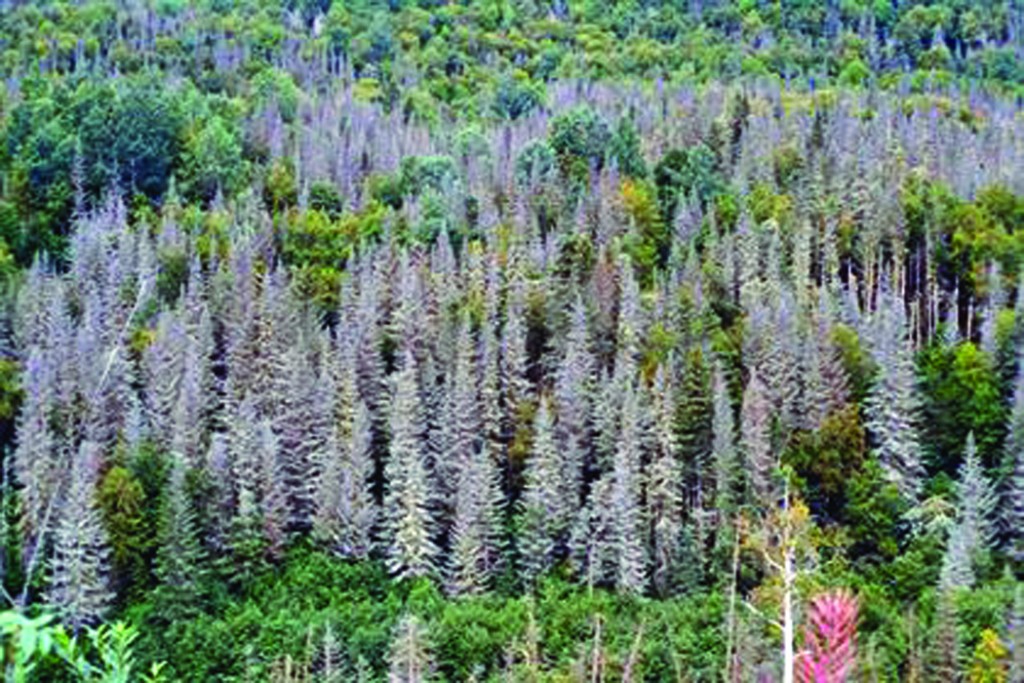Beetles raise concern as wildfire season heats up

CONEJOS — A 2018 aerial detection survey for major damage agents shows bark beetle activity dropping statewide, but increasing in Conejos County.
County summaries include all ownerships within the county boundary. National Forest summaries are based on the forest’s proclamation boundary and include landholdings of all ownership types.
Bark beetle surveys include mountain pine beetle, spruce beetle and Douglas fir infestations. Aerial survey tables provide the number of acres where trees were found to be dying or fading from beetle attack. Fading occurs one year after the initial attack so trees mapped in a given year had been killed by bark beetles the previous year.
Adam Moore of the Colorado State Forest Service (CSFS) told the Conejos Board of County Commissioners (BOCC) a slight increase in spruce beetle damage has been seen, though “they have eaten most of the spruce.”
Colorado is still at great wildfire risk and Conejos County is just a little bit lower, he told the commissioners. Firewise risk management has been useful and a contractor is working with the timber, a project begun at Horca last fall.
Moore thanked Conejos County Land Use Administrator Linda DeHerrera for her help in issuing the needed permits.
Because bark beetles may have been active in an area for multiple years, surveys show a considerable overlap of acres from year to year.
An aspen sale has also been conducted at the La Jara Reservoir and the forest service has been drawing from a Rocky Mountain Wildlife grant.
In 2018 1,400 acres were affected by aspen defoliation.
In Colorado, 12,000 acres were affected, with 3,100 in the Rio Grande National Forest.
Studying cumulative areas affected since 1996 up to this year show the problem is nothing new and potential spread into areas not previously mapped can be determined.
Coming off a year punctuated by large wildfires, Colorado State Forester Michael B. Lester wrote foresters and land managers could ensure protection of the areas by addressing potential disasters before they happen.
Since 2000, nearly 300 square miles have burned in the San Luis Valley, including Colorado’s largest wildfire in 2018.
This includes Alamosa, Conejos, Costilla, Mineral, Rio Grande and Saguache counties and encompasses grass and shrub ecosystems in the valley bottom to high-elevation forests in the surrounding mountains.
The number of homes has increased 80 percent since 1980, and the highest rates of residential growth are in areas of moderate and high wildfire risk.
Typical of the west, San Luis Valley wildfires are more severe and cause more damage in part because of housing development trends that put people in harm’s way and increase the likelihood for human-ignited fires, a state report explains.



